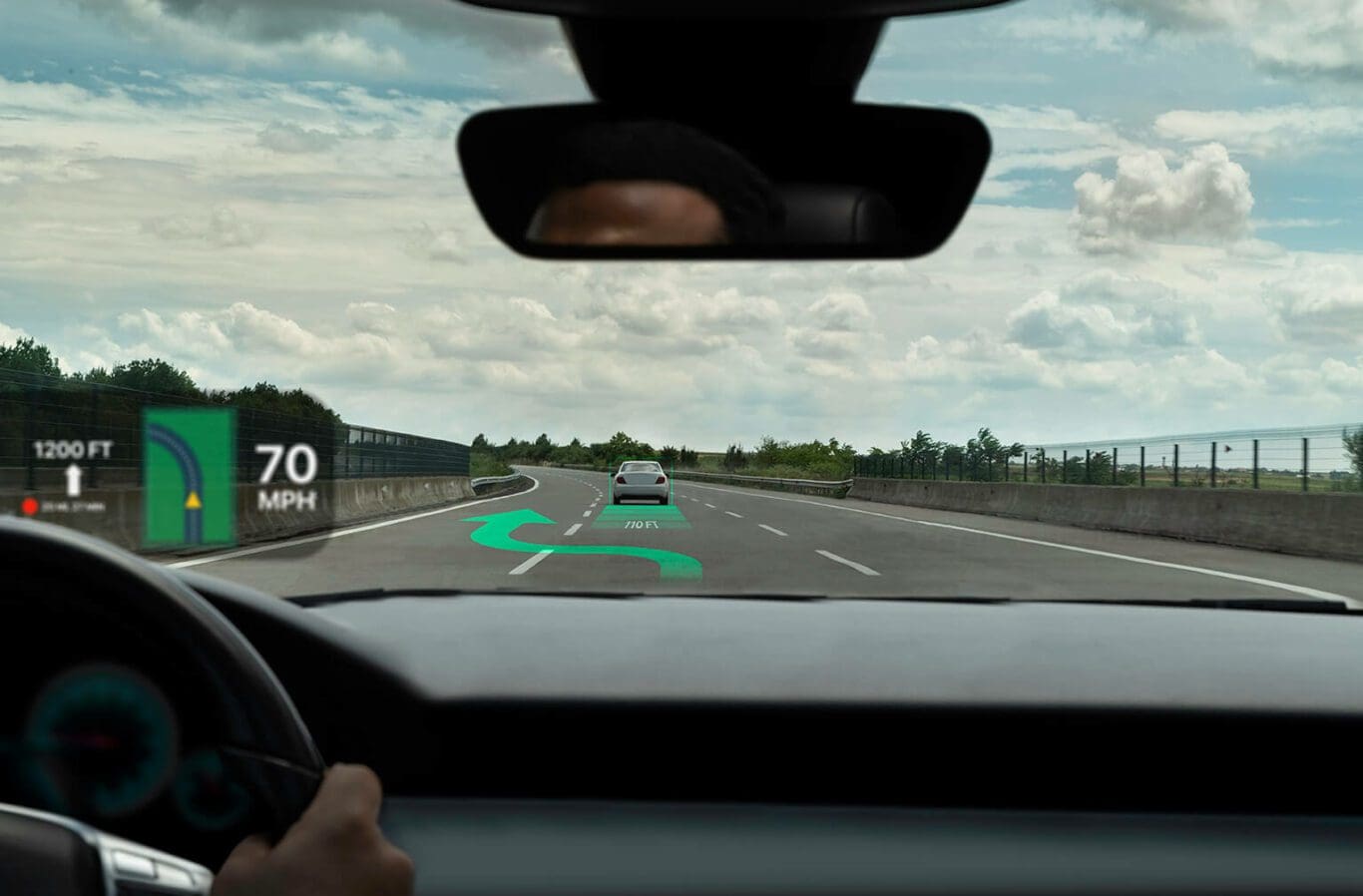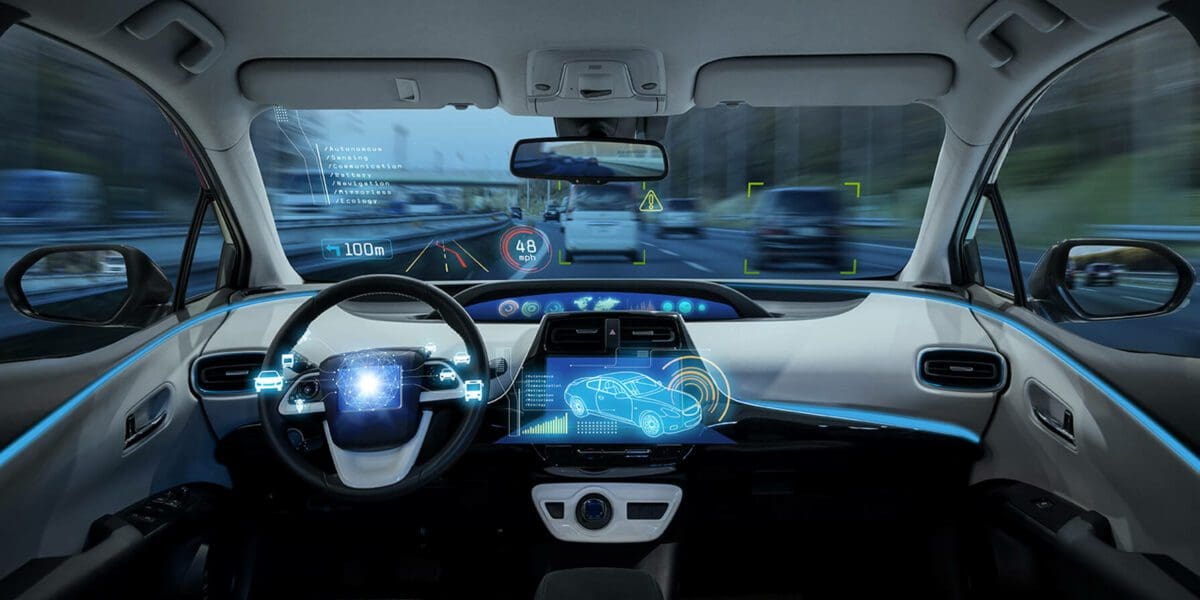There’s a growing consensus that automotive head-up displays (HUD) are becoming one of the more sought after features on new vehicles. By displaying helpful in-vehicle information in the driver’s field of view on or beyond the windshield, head-up displays offer a safe and convenient way to maximize the driver’s focus. What’s less well known is that the technology is not just a part of current automotive trends or future concepts. Its history dates back more than 70 years.
THE MILITARY ORIGINS OF HEAD-UP DISPLAYS
As with many forms of technology, head-up displays can trace their origins to military applications. And, as always, necessity was indeed the mother of invention. In the case of head-up displays, Royal Air Force pilots during the Second World War needed information from their radar systems without taking their eyes off the skies. Alternating their gaze between the dark sky and the backlit glow of a radar screen led to seconds of refocusing the eyes, which could often spell disaster in life and death situations where every second counts.
It was primitive by today’s standards, but the solution was history’s first head-up display. Things picked up quickly through the 1950s, and by the following decade the technology expanded to general piloting. French test-pilot Gilbert Klopfstein created the first modern head-up display and, more importantly, was instrumental in a massive usability innovation for the world of aviation—Klopfstein standardized a system of dash symbols and indicators, so pilots could learn one vehicle system and easily transition between aircraft. By 1975, the modern head-up display used in instrument flight rules was developed and expanded.
FROM THE SKY TO THE STREET
The similar need for drivers to stay focused on the road ahead meant it wasn’t long before head-up technology played a role in automotive. As early as 1965 General Motors installed head-up technology in their Mako Shark II concept car (which would later inform the curvy design of the late 60s/early 70s Corvette body). Unfortunately, the Mako Shark II and its innovative head-up display never made it to market.
Developments stayed on the drawing board for the next twenty years. But GM’s acquisition of Hughes Aircraft in 1985 led to an eventual merger with Delco, GM’s in-house electronics division. Putting aviation’s decade-long head start with the technology to good use, change was indeed on the horizon. Three short years later, in 1988, the concept became reality when the first automotive head-up displays were installed on Oldsmobile Cutlass Supreme Indy Pace Cars and replicas.
As for mass-market consumer vehicles, Nissan won the race when they introduced head-up displays on the 1989 240SX and 1989 Maxima. General Motors responded by offering the feature on the Oldsmobile Cutlass Supreme and the Pontiac Grand Prix. In 1991, Toyota introduced their first head-up display, initially only for the Japanese market, with the Toyota Crown Majesta.
CLEAR, BUT UNOBTRUSIVE
Throughout the 1990s and beyond, General Motors continued to be the forefront pioneer on head-up display technology in passenger vehicles. The first color display arrived with the launch of the 1998 Chevrolet Corvette. Proving that the technology had applications well beyond performance vehicles, Cadillac added a head-up display to the 2003 XLR. That same year, BMW made great strides in head-up display technology with the E60 5 Series. Soon the expectation became that luxury vehicles would all incorporate some form of the feature.
So how exactly do head-up displays in vehicles work? First, there needs to be a surface on which the image can be displayed. There are two main ways to do this in a vehicle: either directly onto the windshield, or onto what is known as a combiner. The combiner often consists of a small plastic piece positioned on the dash in front of the windshield glass and is retractable when not in use.
The other component is a projector to beam the image onto the head-up display. And here’s where it gets interesting—the image needs to be displayed with the proper intensity, depth and clarity to be useful. Numerous studies have examined how the human eye receives information, and how attention can be impacted by visual stimuli. Using those parameters, engineers use a series of mirrors to flip and magnify the projected image. The end result is a clear, non-obtrusive head-up display picture the driver can check as needed and ignore when not.

The Evolution of Head-Up Displays
That basic setup was the standard for the first few decades of automotive head-up display development, when the information centered around vehicle speed, cruise control and other simple indicators.
In the new millennium, things expanded to include convenience feature information, g-forces, gear position and oil temperature for high-performance vehicles.
The arrival of augmented reality (AR) meant using the display to show animations responding to real-world conditions. In 2012, the Pioneer Corporation introduced the first head-up display capable of using animations of the road conditions ahead. Since then, the amount of data available to display has grown exponentially, with a seemingly infinite trove of data—maps, road conditions, traffic, weather and more—all of which can be analyzed and displayed to help the driver. In fact, that very thing has become one of the biggest challenges for head-up display development. If the original intent was to increase safety by helping the driver not avert their eyes from the road ahead, then surely information overload is not the answer.
The Way Forward
Head-up displays will continue to evolve—both inside the vehicle cabin and without. It’s safe to assume the device may well become another channel through which product information must be leveraged. This highlights the importance of properly researching, distilling and reconfiguring technical information for the easy consumption of end-users and other vehicle owners. More than ever, it’s imperative manufacturers develop useful, focused, intuitive multi-channel product information.



